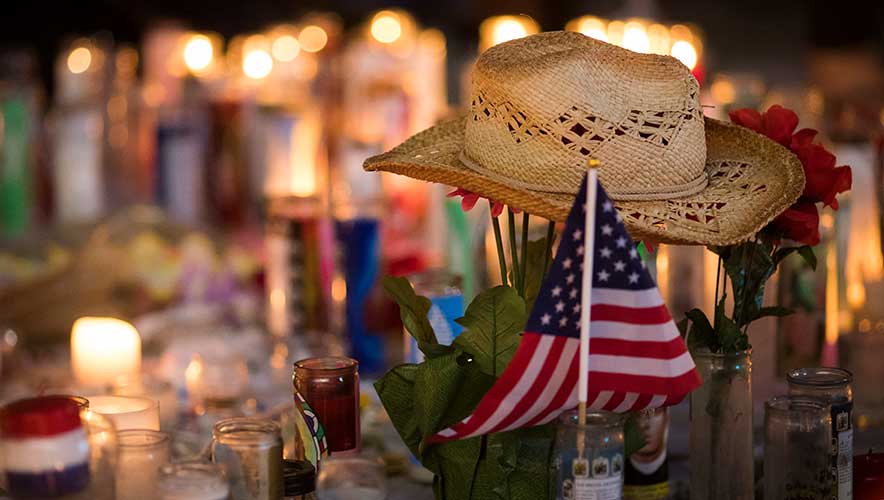New Documentary Revisits Deadliest Shooting in American History
Streaming service Paramount+ today released the documentary 11 Minutes, which covers the deadliest mass shooting in United States history: the 2017 Route 91 Harvest Festival shooting in Las Vegas, Nevada.
Paramount+ timed the release to coincide roughly with the five-year anniversary of the massacre. On 1 October 2017, a gunman opened fire from a 32nd-floor window of the Mandalay Bay hotel that overlooked the festival, killing 60 people and wounding at least 413.
The documentary has four episodes and runs more than three hours total. It includes footage not previously released publicly, including footage culled from 200 hours of cell phone video taken at the scene and police bodycam videos as law enforcement approached the room of the shooter. The shooter, however, is not the focus of this documentary.
“There are extraordinary acts of courage and human beings helping human beings,” Susan Zirinsky, a producer on the project, told the Associated Press. “They’re just regular people. In the darkest hours, people found each other.”
The survivors, the victims, and the responders are the focus of this documentary, which dives into the emotional tolls that mass shootings take on those involved in the incident.
Another survivor and executive producer on the project, Ashley Hoff, said, “As I ran out of that field, I believe I witnessed some of humanity’s greatest moments. …I’ve gotten to hear from many fellow survivors, some of the strongest, bravest, most resilient people I've ever met.”
11 Minutes also captures poignant moments from first responders, such as a police officer on foot patrol on the concert grounds after the shooting stops who hears several cell phone rings going unanswered, knowing it is loved ones on the other end of the line frantically trying to see if someone is okay.
The final episode, “Humans Helping Humans,” begins on the morning of 2 October 2017, the day after the shooting, and describes the bonds that developed between some survivors.
Another main point of the documentary is to break through the human coping mechanism of desensitizing traumatic events. It was a horrendous event, and for those involved in the project, it is important that people remember the horror and terror mass shootings cause so that society does everything it can to prevent them. “Is it easy to watch? No, but it shouldn’t be easy to watch,” said SiriusXM host Storme Warren, who was onstage in Las Vegas that night. “I don’t know why you would tell the story if it were easy to watch.”
The Guardian news outlet, which covers U.S. news for a global audience, led its coverage of the documentary with this paragraph:
The most subtly horrifying aspect of the frequency with which mass shootings occur in America is how they all start to blend together for those not directly involved. This year has already witnessed enough acts of public violence to fill a sprawling list on its own Wikipedia page, leaving the average human brain with no choice but to inure itself for the sake of self-preservation. People outside the sphere of an incident forge onward because if they didn’t, contending with the unthinkable mounting of grief would be all they would ever do. Ask someone off the street to name the single deadliest shooting in national history, and chances are that they’ll realize the events of 1 October 2017 have already receded into the homogenized soup of memory.
“If you’re touched, if one of your loved ones is affected by this, it never goes away,” 11 Minutes Director Jeff Zimbalist told the Guardian. “But the news moves on, people go to the next headline. So, how do you continue to engage people? You tell it through the archive, through the journeys of people with unexpected stories. The biggest balancing act was how you get this to be so visceral that audience members fortunate enough not to have experienced a mass casualty incident still understand it in an authentic and deep way, and how you do that without re-traumatizing anyone.”










